Choosing the Perfect Wakeboard Size for You
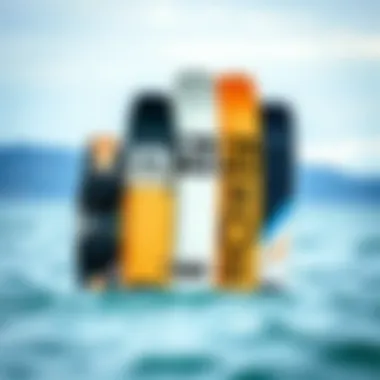
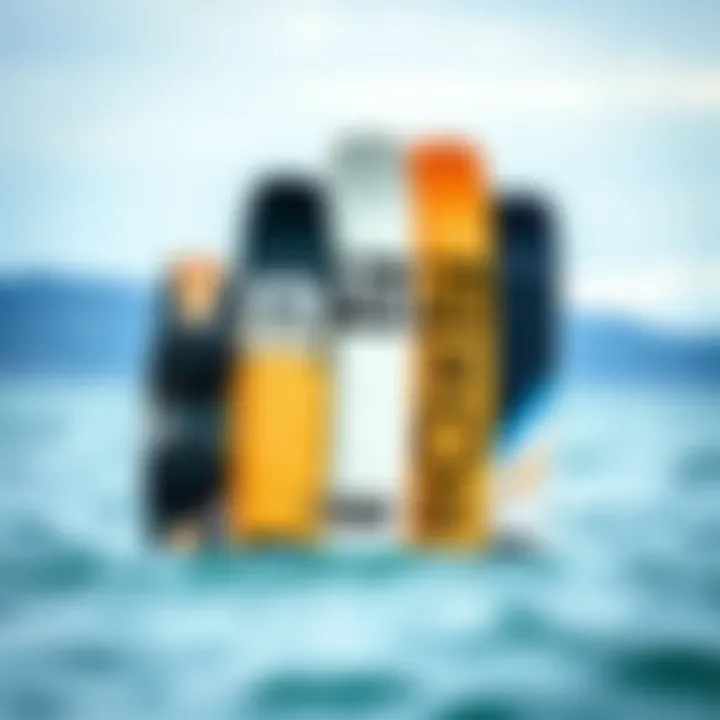
Intro
When it comes to wakeboarding, the size of your board can significantly affect your experience on the water. It’s not just about looking good or having the most high-tech board; it’s about matching the equipment to your personal style and body type. Selecting the right wakeboard size is like finding the perfect pair of shoes—too big or too small, and you’ll be stumbling around instead of gliding gracefully across the water.
This guide aims to demystify the process, giving you all the tools you need to select a wakeboard that aligns with your weight, skill level, and preferences.
Tips and Techniques
Beginner Tips for Watersports
For newcomers to wakeboarding, the first step is understanding that your board’s size plays a vital role in both your performance and comfort. Here are some essential points to consider:
- Determine Your Weight: Find a reliable weight chart specific to the brand you’re interested in. Brands like Ronix or Hyperlite often provide thorough guidelines that can cast light on how weight influences board size.
- Choose the Right Board Type: Boards come in different shapes and styles. For instance, a shorter board may be easier to control for beginners, whereas a longer board can offer more stability.
- Check the Rocker Profile: The board's rocker (the curve of the board) significantly impacts performance. A continuous rocker offers smooth movements, while a three-stage rocker gives you more freestyle pop.
- Don’t Skip the Bindings: Trying the bindings before hitting the water is crucial. A snug fit without excess pressure will enhance your experience.
- Practice Falling Safely: It may sound odd, but understanding how to fall can save you from injury. Lean back during falls to prevent face plants and keep your limbs safe.
Advanced Techniques for Mastery
For those familiar with riding but looking to step up their game, here are essential techniques to consider:
- Tweak Your Stance: Experimenting with your stance, both width and angle, can drastically change how you ride. A wider stance generally offers more stability, while a narrower one can allow for quicker maneuvers.
- Utilize Board Length for Tricks: A longer board can help with stability during tricks, while a shorter board tends to facilitate quick spins.
- Practice on Different Boards: Ride various types to see what feels right. Sometimes, switching it up can give you fresh perspective on what works for you.
"Riding is not just about skill; it’s also about the chemistry between you and your board. Finding that sweet spot can redefine your experience."
Safety and Gear
Essential Safety Practices
Safety comes first in any water sport. Here are practices to keep in mind:
- Wear a Life Jacket at All Times: This is not just a recommendation; it’s mandatory in many boating areas.
- Know the Weather Conditions: Pay attention to wind speed and water situation. Unsafe water can turn a fun day into a hazardous one.
- Designate a Spotter: When someone’s riding, have a friend keep an eye on them. A second set of eyes makes a huge difference.
- Learn Hand Signals: Communication is key. Establish a few simple signals with your crew to enhance safety.
Gear Reviews and Recommendations
When it comes to wakeboards, various brands cater to different needs:
- Hyperlite Murray: Known for its versatility and comfort, ideal for beginners and casual riders.
- RONIX One: A stylish option with attention to detail, great for more advanced tricks.
- Liquid Force: Renowned for its durable materials and innovative designs.
For bindings and safety gear, look into:
- CWB Faction Bindings: Offers comfort without sacrificing support.
- O'Brien 2021 Classic Vest: A reliable and cozy life vest ideal for any watersport enthusiast.
Selecting the right size wakeboard and ensuring safety gear is up to snuff can elevate your experience on the water. Take the time to research, consider your options, and respond to your own needs, and your wakeboarding adventures can thrive.
Understanding Wakeboard Sizes
Selecting the right wakeboard size can make or break your experience on the water. A board that's too big or too small can lead to challenges in maneuverability, control, and overall enjoyment. In this section, we will break down the crucial aspects of wakeboard sizing, so you can understand why it’s not just about picking any board off the shelf. Knowing how to choose the right size allows riders, whether novices or seasoned pros, to enhance their skills and, ultimately, their fun.
The Importance of Size
The size of your wakeboard is akin to finding the right pair of shoes; it affects performance and comfort. A well-fitted wakeboard will improve stability, help maintain speed, and maximize your tricks. If you're too heavy for a small board, you could easily sink instead of gliding through the water. Conversely, a board that's too large could feel clunky and challenge your agility. Both scenarios not only diminish your riding experience but could also lead to injuries.
"Selecting the appropriate board size isn’t just a recommendation; it’s fundamental for both safety and thrill on the water."
Also, let's not forget how wakeboarding is filled with styles and preferences. A professional will likely have a different need than a casual user. The right size can help influence your development in skills and techniques. Whether you value jumps, flips, or just enjoying the smooth glide, understanding size is the first step in tailoring your experience.
Wakeboard Sizes Explained
Wakeboards come in a variety of sizes, typically categorized by length. The cornucopia of boards often confuses new riders.
Here's a simple breakdown:
- Small boards (132–134 cm): Ideal for lighter riders, usually under 140 pounds. These boards are great for tricks and offer more control.
- Medium boards (135–139 cm): A balance between stability and maneuverability; perfect for folks weighing around 140 to 180 pounds.
- Large boards (140 cm and above): Better suited for heavier riders, these boards provide the necessary surface area to help keep the rider afloat and stable.
Choosing the appropriate size isn't merely about your weight; your height also has an impact. Taller riders might lean toward longer boards, enabling them to balance better and get the most out of their tricks.
Additionally, brands often have their sizing recommendations, so it’s good to check with specific manufacturer's guidelines before making a purchase.
In summary, understanding wakeboard sizes is essential for maximizing your experience on the water, promoting learning, safety, and enjoyment. Take your time making this decision, as it can play a vital role in how you interact with the waves.
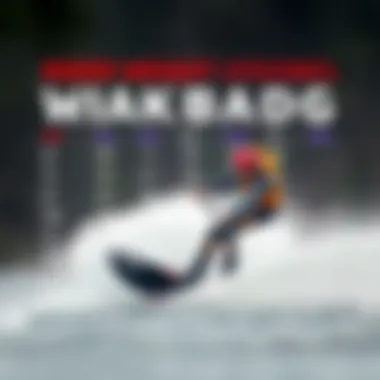
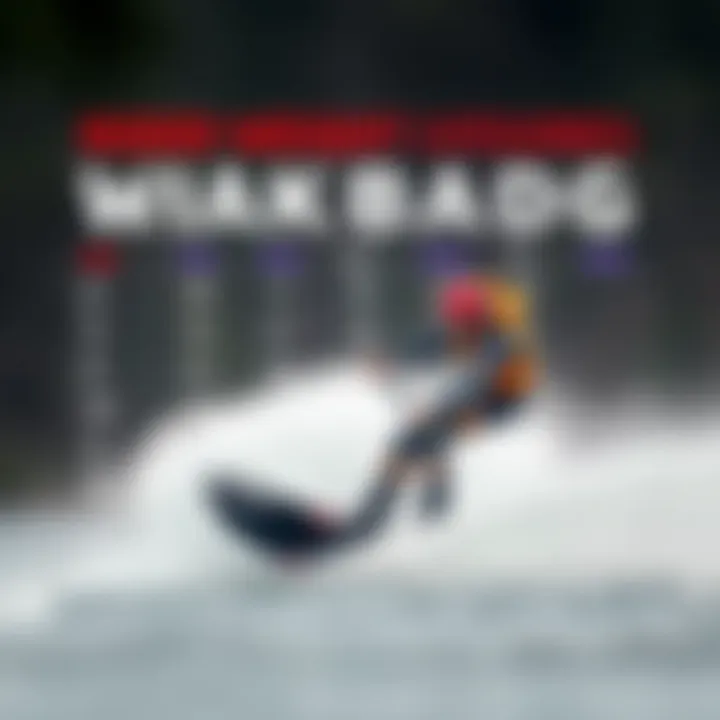
For more comprehensive size guides, check resources such as WakeboardSizing.com or detailed reviews on forums like Reddit.
Factors to Consider When Choosing a Wakeboard Size
Selecting the right wakeboard size isn’t just a trivial decision; it’s a significant factor that can elevate your experience on the water. Think of it as the foundation of your wakeboarding journey. Making the choice is like standing before a buffet with a plethora of options, where picking just the right dish can make all the difference between satisfaction and disappointment. The size of your wakeboard impacts everything from control to stability, and even your overall enjoyment.
It’s integral to factor in various aspects to ensure you land on a board that fits not just your physical measurements but also your unique style and aspirations. In this section, we will explore three critical elements: rider weight and height, riding style and skill level, along with water conditions and the type of board.
Rider Weight and Height
When it comes to determining the right wakeboard size, your weight and height are the cornerstones. Like trying to fit a square peg in a round hole, if you opt for a board that doesn’t match these metrics, you could end up compromising your safety and fun.
Generally, most wakeboard manufacturers provide size charts correlating specific dimensions to weight ranges, usually indicated in pounds. For instance, if you weigh around 150 pounds, you might find that boards between 135-140 cm are suitable for you
But let’s not stop there. Height plays a pivotal role too. A shorter rider may perform best on a slightly shorter board, as it can increase maneuverability. Conversely, taller folks might require longer boards for added stability. The balance becomes a fine art—get it right, and it’s smooth sailing; get it wrong, and you may find yourself awkwardly battling the wakes.
Riding Style and Skill Level
Next up is how you ride and how well you ride. Your style and skill can greatly influence your board selection. Beginners often benefit from wider boards, as these can improve stability and provide an easier learning curve. Think of it as starting with training wheels on a bike—once you gain confidence, you can tackle more advanced setups.
On the flip side, seasoned riders who often dabble in tricks or aggressive maneuvers may prefer boards designed for higher performance. These typically feature a narrower tail and a more refined shape, allowing for sharper cuts and better pop off the wake. Each rider's preference tells a story, so understanding how you want to style your ride can help you narrow your choices significantly.
Water Conditions and Board Type
Last but not least, the water conditions and board type must not be overlooked. Are you usually gliding on flat lakes or cutting through choppy ocean waves? The environment where you ride can dictate whether you need a specific board style. In rough waters, boards with a slight rocker can help maintain stability, while flatter boards offer a smoother ride on calmer surfaces.
Also, whether you gravitate towards cable parks or boat wakes can determine your board choice. Cable parks usually favor a more robust construction designed to withstand obstacles like sliders and kickers, while boat boards often prioritize buoyancy and versatility for varied riding styles.
Ultimately, narrowing these factors down is instrumental in finding a wakeboard that feels like an extension of yourself, enhancing every ride and ensuring you get the most out of your time on the water.
"The key to enjoying water sports lies in the right equipment, all tailored to fit you and the waves you conquer."
By considering all these essential factors, you’ll be well on your way to choosing a wakeboard that not only meets your needs but elevates your overall experience.
Assessing Your Skill Level
Recognizing where you stand in your wakeboarding journey is vital for selecting the right board size. The complexity of wakeboarding isn't just in the tricks you can pull off; it also involves understanding how your skill level influences the choice of equipment. A board that perfectly suits a seasoned rider might feel cumbersome to a beginner. Therefore, assessing your skill level is not just a matter of pride but a crucial step toward achieving both safety and enjoyment on the water.
Beginner Considerations
For newcomers, everything in wakeboarding seems exhilarating yet intimidating. They are often full of zest and excitement, yet they may lack the practical knowledge required to select the right equipment. When it comes to beginners, a larger board is usually the best friend — think of it as safety training wheels for a bicycle. A larger board provides ample surface area for stability, which can help beginners avoid nasty spills as they learn their way around.
- Weight Matters: Generally speaking, beginner wakeboarders should lean towards boards that are a bit longer. This added length translates into greater buoyancy and support. For example, if you weigh around 150 pounds, you might find that a board length of 135-140 cm not only makes great sense but can ease your learning curve significantly.
- Board Shape: Opting for a board with a more pronounced rocker can also help with initial learning; it allows for easier turns and a softer landing on those early jumps.
- Access to Rentals: Many wake parks offer rental equipment specifically tailored for beginners. Renting gives new riders the chance to try out different sizes and shapes without making a hefty investment right at the outset.
Intermediate and Advanced Riders
Once the initial jitters have worn off, the focus on board size becomes more refined among intermediate and advanced riders. This group often has a distinctive riding style, which significantly influences their gear preferences. An intermediate rider will likely prefer a balance between stability and responsiveness.
- Skill Development: An intermediate might opt for a slightly shorter board to enhance agility. For instance, someone who has progressed past the basics might find a 130-135 cm board a better fit.
- Diverse Riding Styles: Advanced riders often dictate their board choice based on their specific needs, such as freestyle tricks versus boat wake sessions. For someone mastering aerial tricks, a lighter board with flex might just provide the additional boost needed. A well-balanced board allows for quick transitions and greater maneuverability to execute those fancy flips and spins with finesse.
- Experimentation: Testing various boards is essential at this level; no one-size-fits-all approach exists. Advanced riders often rotate between multiple boards tailored to fit specific riding conditions. Understanding how size influences performance can pay dividends in improving both skillset and comfort on water.
"The board is an extension of your body. Choosing the right one can completely change your experience on the water."
Finding a board that complements your skill level can make or break your wakeboarding experience. Whether you’re still catching your breath as a novice or carving up the water like a pro, knowing where you stand should guide your decision-making when it comes to equipment selection.
Different Board Types and Their Sizes
Understanding the different types of wakeboards and their corresponding sizes is paramount for anyone aiming to improve their wakeboarding experience. Each board type caters to specific styles and preferences, thereby influencing not just performance but also safety and enjoyment on the water.
Choosing the right board type can guide you to a more fulfilling ride, allowing a rider to tap into their full potential while minimizing the risk of injury. Here’s a look into two major classifications of boards: directional and twin-tip boards, as well as the distinction between cable parks and boat boards.
Directional vs. Twin-Tip Boards
When it comes to wakeboards, one quickly encounters the terms “directional” and “twin-tip.” Understanding these terms is crucial, as they fundamentally affect how a rider navigates and utilizes the board on the water.
Directional Boards
Directional boards are designed to be ridden in one direction only. This means that the nose (the front tip) is different from the tail (the back), providing a more pronounced shape aimed at carving through the water efficiently. They excel in certain conditions, like large wakes or rough water, boosting control and stability. Generally, these boards are favored by those who are more focused on performance, particularly in big-air situations.
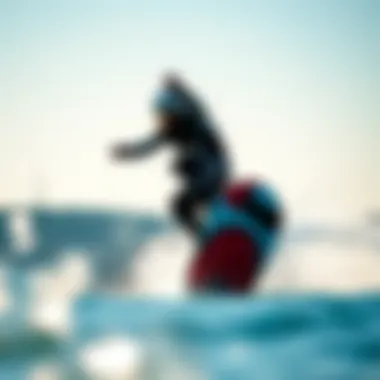
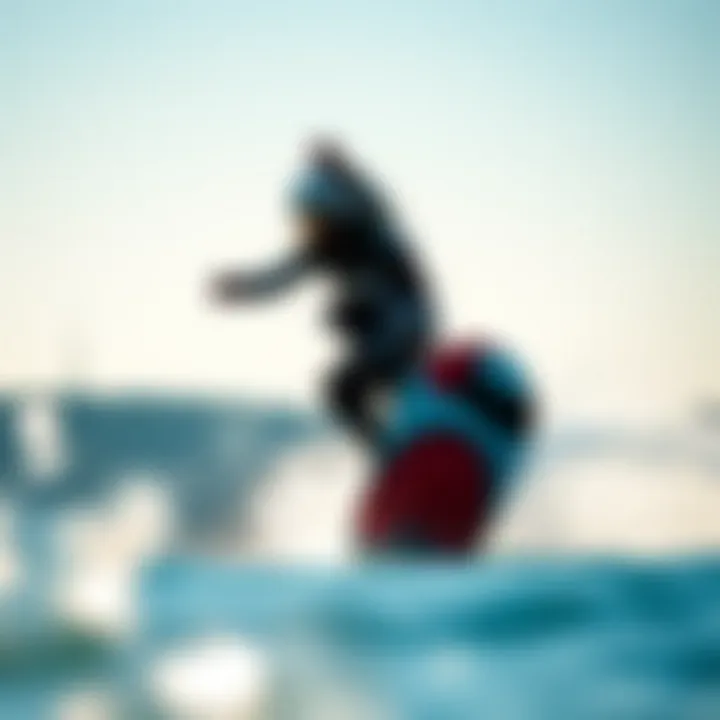
Twin-Tip Boards
In contrast, twin-tip boards boast a symmetrical design, allowing for riding in either direction. This versatility serves those who enjoy a freestyle approach, incorporating tricks and transitions with finesse. The design enables smooth landings from both regular and switch stances. Many beginners gravitate towards twin-tips because of this flexibility, making them a great entry point for those still mastering the basic skills.
Ultimately, the choice between directional and twin-tip boards can swing heavily based on personal style and preferences. It's often fun to experiment to find what feels best underfoot, fostering growth in skills and enjoyment.
Cable Parks vs. Boat Boards
The environment where one chooses to ride can also dictate the type of board suited for them. There are notable differences between boards tailored for cable parks compared to those designed for boat riding, and understanding these can significantly impact one’s riding experience.
Cable Parks
At cable parks, wakes are generated by an overhead system that continuously moves riders around a circuit. Boards suited for cable parks are typically constructed with durability and toughness in mind, as they need to withstand features like ramps, rails, and all sorts of obstacles. They often have a slightly heavier build to resist potential damage. Choosing the right size here means factoring in features that might affect performance, such as speed and stability while hitting features.
Boat Boards
On the other hand, boat boards are designed to work with the traditional engine-driven boats that create wakes for the rider to jump and carve through. They are often lighter and can offer a different rocker profile tailored for airtime. Riders utilizing boat boards might prioritize length and width differently since the size of the wake produced can vary greatly based on the type of boat and its ballast. For boat riders, board sizes achieving optimal pop and landing are significant components in selecting the right equipment.
In both cases, experimenting with different boards based on the environment can yield valuable insights. As time goes on, riders often fine-tune their gear choices based on where they spend the majority of their time on the water.
Finding the right wakeboard size intimately connected with the type of board and riding environment greatly enhances the overall experience on the water. Whether it's for the exhilarating boost from a boat or the thrill of hitting a rail in a cable park, each aspect plays a critical role in your waking journey.
Size Charts and Weight Recommendations
Choosing the right size for your wakeboard goes way beyond just picking it off the rack; it’s actually a balancing act of science and instinct. Proper size selection plays a huge role in maximizing performance and safety, directly influencing your ability to carve through the water or get that perfect pop off the wake. Utilizing size charts and understanding weight recommendations can give you a solid foundation to find a wakeboard that fits like a glove.
Using Manufacturer Size Charts
Most wakeboard brands provide size charts tailored to their specific boards. These charts are essential tools that correlate board lengths to rider weight and skill level. They take much of the guesswork out of the equation, allowing you to systematically narrow your options based on your unique parameters. For instance, if you weigh around 160 pounds and are a beginner, a board length in the range of 138-144 cm might be recommended.
- Benefits of Size Charts: They simplify the selection process by giving clear guidelines.
- Considerations: Different manufacturers may have varying recommendations based on their board designs, so it’s good to look at multiple brands before making a choice.
Common wakeboard manufacturers with helpful size charts include:
- Hyperlite
- Liquid Force
- Ronix
Weight Classes and Board Lengths
Understanding the interplay of weight classes and board lengths is crucial. Generally, as you might expect, heavier riders require longer boards for better lift and stability, while lighter riders benefit from shorter boards that allow for quicker maneuverability.
- Lightweight riders (up to 140 lbs) typically gravitate towards boards around 130-134 cm.
- Mid-weight riders (approximately 140 to 180 lbs) will often find their fit in the 135-140 cm range.
- Heavier riders (over 180 lbs) generally need longer boards, around 140 cm or more.
It’s important to take into account not only your weight but also the type of riding you intend to do. Styles that involve a lot of tricks or jumps may favor different board sizes than those focused more on cruising or stability.
The right board size not only improves performance but also enhances your comfort and safety on the water.
Amateurs often overlook the relationship between weight and board length, leading to frustration and less enjoyment on the water. If you’re serious about wakeboarding, get familiar with these charts and pay attention to your weight class—it’s not just a number; it’s the key to truly enjoying this exhilarating sport.
Personal Preferences and Riding Style
When it comes to wakeboarding, personal preferences and riding style significantly influence not only the type of wakeboard one might choose, but also the overall enjoyment of the sport. Each rider has unique tastes and skills that dictate the kind of experience they seek on the water. Understanding these elements is essential for optimizing performance and comfort.
Freestyle vs. All-Around Boards
Choosing between freestyle and all-around boards can shape your sessions at the lake.
- Freestyle boards are designed for tricks and jumps. They are generally shorter and have a softer flex, allowing for better maneuverability. Riders who enjoy spinning and flipping tend to gravitate towards these boards because they make landings more forgiving. The lightweight design helps with aerial tricks, giving enthusiasts that exhilarating kick off the wake.
- All-around boards, on the other hand, provide versatility. They cater to both beginners who are still learning the basics and seasoned riders who want to dabble in various styles. These boards typically come in a range of sizes and shapes, accommodating different rider weights and riding conditions. Another valuable point is that all-around boards’ steadiness works well in different water types, making it simpler to ride, whether you are hitting a wake or just cruising.
Ultimately, your choice here may boil down to your primary goals as a wakeboarder—do you want to feel like a bird soaring in the sky, or prefer a balanced ride that offers many pathways?
Influence of Flex and Shape
The flex and shape of a wakeboard play a pivotal role in how a board performs on the water.
- Flex determines how a board reacts under pressure. A softer flex is often favored by beginners and freestyle riders, as it allows for easier landings and more fluid movements. Meanwhile, a stiffer board offers better speed and edge control for advanced riders tackling challenging courses. Think of it this way: softer boards might feel like drifting down a gentle stream, while stiffer boards are akin to racing a swift river.
- Shape also has its say in how a board handles. There are various shapes, including continuous and three-stage rocker. A continuous rocker provides smooth and consistent glides, while a three-stage rocker gives that extra pop off the wake needed for aerial tricks. This selection affects how a board interacts with the water and, by extension, how comfortable the ride feels.
In summary, the right flex and shape can elevate your riding experience, making even the most mundane weekend feel like an extraordinary adventure. Consider what aligns with your personal style, as this can enhance not just performance but also your confidence on the water.


Keep in mind, as every board type has its strengths, balancing your preferences with performance needs can lead to significant improvements in fun and safety while wakeboarding.
Common Misconceptions About Wakeboard Sizes
Selecting the right wakeboard size is crucial for maximizing performance and enjoyment on the water. However, there are various misconceptions that can lead to confusion among riders, beginners and veterans alike. This section aims to debunk common myths and shed light on the factors that truly influence wakeboard sizing. By addressing these misconceptions, it's possible for you to make a more informed choice about the board that matches your needs, ultimately enhancing your wakeboarding experience.
Larger Boards Equate to Better Stability
Many riders fall into the trap of believing that a larger wakeboard automatically means better stability. It's a common assumption that, just like a big boat can handle rougher waves, a larger board can simply glide over water with ease. While it's true that a bigger board may provide a more stable platform, it's not a blanket solution for everyone. Stability is not merely about size; it's about design, riding style, and even individual preferences.
For example, a heavier rider might find a larger board accommodates their weight better, but if their style leans towards tricks, a smaller board might allow for easier maneuverability. Also, a larger board can have slower edge-to-edge transitions, which can actually hinder faster riders who have the skill to handle smaller boards.
It's best to think of board stability as a delicate balance influenced by several factors:
- Rider Technique: How skilled you are at wakeboarding can dictate how efficiently you use a board's design.
- Board Shape: Varied shapes give different levels of grip and buoyancy, and these can compensate for size.
- Conditions: Wind and water conditions can greatly affect how a board performs, rendering different sizes more or less effective.
Ultimately, size is just one piece of the puzzle when it comes to stability.
Weight Is the Only Factor in Size Selection
Another pervasive myth is that weight is the sole determinant when it comes to selecting the proper wakeboard size. While it's undeniable that weight plays a significant role, focusing exclusively on this aspect often leads to poor decisions. Yes, various manufacturers provide weight recommendations for their boards, but there's much more to consider.
When you're choosing a wakeboard, also keep in mind:
- Rider Height: Taller riders can have different balance issues from shorter riders, even if they share the same weight.
- Skill Level: A beginner might need a board that’s a bit larger for ease of use, while an advanced rider would benefit from a smaller board that allows for better control and quicker movements.
- Type of Riding: Freestyle riders often opt for shorter boards that support technical tricks, while wake surfers might appreciate longer boards that facilitate stability on the waves.
This makes it evident that the choice is about more than just weight. Ignoring these additional variables can lead to a wakeboarding experience that’s less enjoyable or even frustrating.
“Choosing the right wakeboard size is a personal journey, not just a number. Dive deep into your own style!”
By grasping the essentials in the context of these common myths, you're better equipped to select the board that truly complements your riding style, weight, and skill level, propelling you toward a more enjoyable ride.
Testing and Trying Boards
When it comes to selecting the right wakeboard size, the mantra really holds true: there’s no substitute for firsthand experience. Testing and trying boards isn't just a luxury; it's an essential step in ensuring your choice yields optimal performance on the water. One of the primary benefits of this approach is that it helps you gauge not only the size but also the feel of the board as it interacts with your unique style and skill level. While size charts and recommendations can provide a baseline, actual testing can guide you toward the perfect fit.
Renting vs. Buying
For those new to wakeboarding, starting off with rentals can be a wise and cost-effective choice. Renting allows you to try different board sizes, shapes, and flexibilities without the financial commitment of a purchase.
- Flexibility in Choices: By renting, you can sample multiple options. This gets you familiar with various models while avoiding the trap of picking a board that seems great in theory but doesn't sit right once you hit the water.
- Cost-Efficiency: Especially if you’re still figuring out your preferences, renting keeps your wallet happy. Consider allocating those funds toward lessons or gear later, once you've identified your ideal board.
- Expert Guidance: Rental shops often have knowledgeable staff who can provide valuable insights tailored to their local conditions and your riding style, offering a personalized experience.
In contrast, buying a board makes sense if you’ve already pinned down what works best for you. You'll have the luxury of riding your chosen board consistently, which is key for improving your skills. It also means you get to know the board's nuances over time, helping you become one with it.
Importance of Testing in Water
The element of testing in the water cannot be understated. Board performance can dramatically differ when tested in its intended environment versus simply on land or even up on a dock.
- Real-Time Feedback: Water testing delivers real-time feedback on how the board behaves. You can experience its buoyancy, speed, and handling directly—elements that can prove challenging to assess without water.
- Match to Personal Preferences: A board that may appear like a good fit based on metrics might not deliver the expected experience in practice. It’s during water testing that you can feel how the board aligns with your personal riding style.
- Adaptability: By trying boards under various conditions—whether choppy water, smooth glassy rides, or cable setups—you’ll ascertain how adaptable it is to different environments. This helps you decide on a board that compliments the diverse conditions you might face.
In summary, engaging in the process of testing and trying boards isn’t merely an exercise in comparison but is pivotal to finding your true match on the water. It allows you to align your gear with your riding ambitions effectively.
Culmination
Selecting the correct size of a wakeboard is not merely a matter of convenience; it profoundly affects both performance and enjoyment on the water. A well-sized board can elevate a rider's experience, enabling them to catch air with confidence or carve seamlessly through the water. When riders neglect to consider factors such as their weight, height, riding style, and water conditions, they risk compromising their safety and limiting the potential for growth in their skills.
In essence, this article has explored critical factors that contribute to making an informed decision about wakeboard size. Knowledge of these elements can significantly enhance not just performance but also the overall enjoyment of this exhilarating sport.
Summarizing Key Considerations
- Rider Weight and Height: These are fundamental in gauging the right board size. Boards are typically categorized by lengths that correspond to weight ranges. For instance, heavier riders need longer boards for better support and lift.
- Skill Level: Beginners often benefit from slightly larger boards that offer stability and ease of use. In contrast, advanced riders may lean towards smaller boards for better maneuverability and tricks.
- Riding Style: Whether you are into freestyle, boat riding, or cable parks can shape your board choice. Each style has specific requirements for size and shape, impacting your performance and experience.
- Water Conditions: Calm waters and choppy conditions require different board characteristics. Understanding your common riding environments can help you select a suitable board size and type.
- Testing and Personal Preference: Ultimately, personal comfort plays an integral role. Testing various boards allows riders to feel the differences and discover what works best for them.
Final Thoughts on Wakeboard Selection
As we wrap up this guide, it is clear that selecting the right wakeboard size is a multifaceted decision affecting both performance and fun. An incorrectly sized board can lead to a frustrating experience, making it challenging to improve skills and enjoy the sport. Conversely, a board that fits well allows riders to explore their potential, push boundaries, and relish every moment on the water.
For the serious wakeboarder or even the weekend enthusiast, sound knowledge and careful consideration of individual factors can transform an average day at the lake into something extraordinary. In the end, investing time in understanding the right wakeboard size is a small price to pay for a world of enjoyment on the water.
Engage with your sporting community or consult expert resources for further insights, and don’t hesitate to try different options on the water. The ride of your life awaits when the choices match your personal style and physical needs.
"A proper fit is not just a matter of comfort; it's the difference between gliding through waves and struggling against them."
For further insights, check resources on Wakeboarding Basics or join discussions on Reddit.
Embrace the adventure with the right equipment, and you'll ride like the wind.















